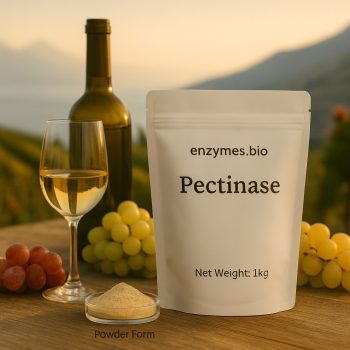
Enzymes are proteins with a significant amount of nitrogen. They are of great importance in fermentation and biological acid degradation. The Winemaking enzymes necessary for winemaking are naturally already found on the grapes, in bacteria or the yeast. Oenological enzyme preparations are also produced to supplement or support the grape’s own enzymes. Such enzymes are used in winemaking to improve juice yield, release aromas, improve color extraction, extract softer tannins, and improve filter properties. The corresponding preparations are added during processing steps such as pressing, mash fermentation, fermentation, malolactic fermentation, clarification, aging, and filtration.
Enzymes act similar to a catalyst in wine, they can take over the function of yeasts, for example. However, the modern wine industry primarily uses enzyme preparations to accelerate the juice run-off during pressing, for faster and safer pre-clarification of the must, to increase the color yield or to improve the filtering ability. But this is not all.
Enzyme preparations have long been available that serve to intensify the aromas. They specifically enhance the intensity of the bouquet and provide for excessive emphasis on the type of variety. Sauvignon Blanc, for example, is often “aroma-accelerated” in this way. Numerous “loud” Sauvignons from Styria, Friuli, and South Tyrol, but also many New Zealand Sauvignons, suggest that they have been aromatically enzymatically enhanced. Even the strikingly simple peach and apricot aroma of many Rieslings come less from nature than enzyme preparations.



